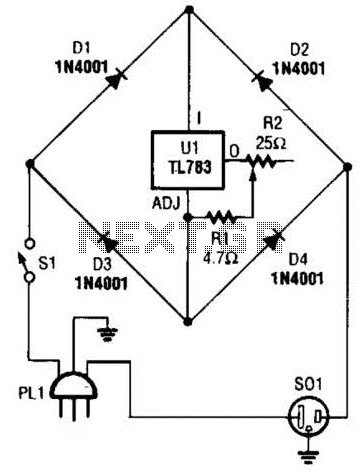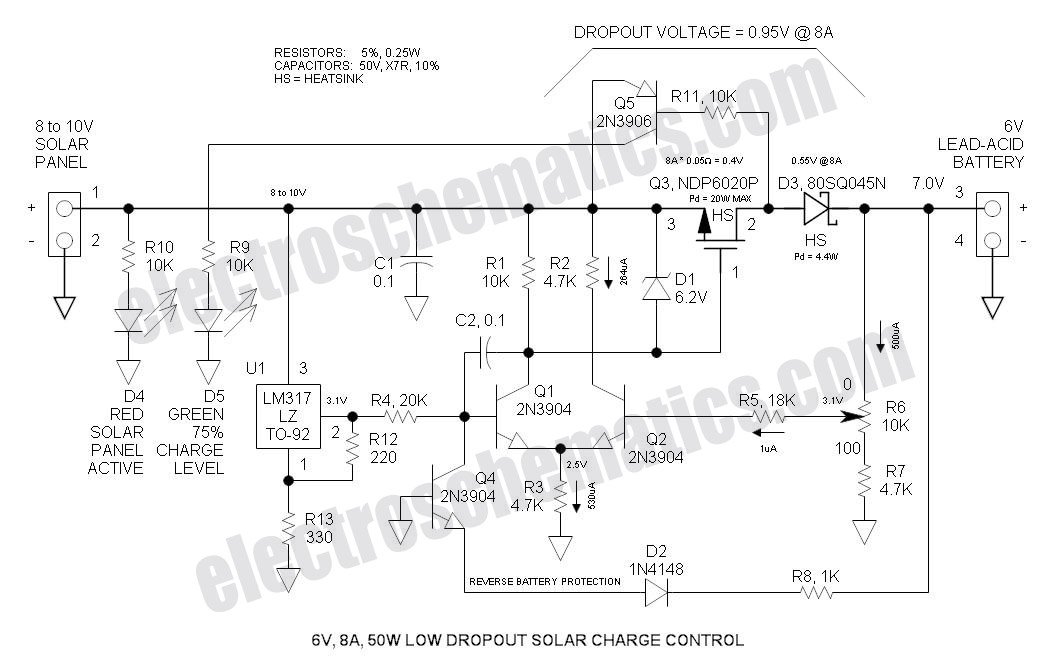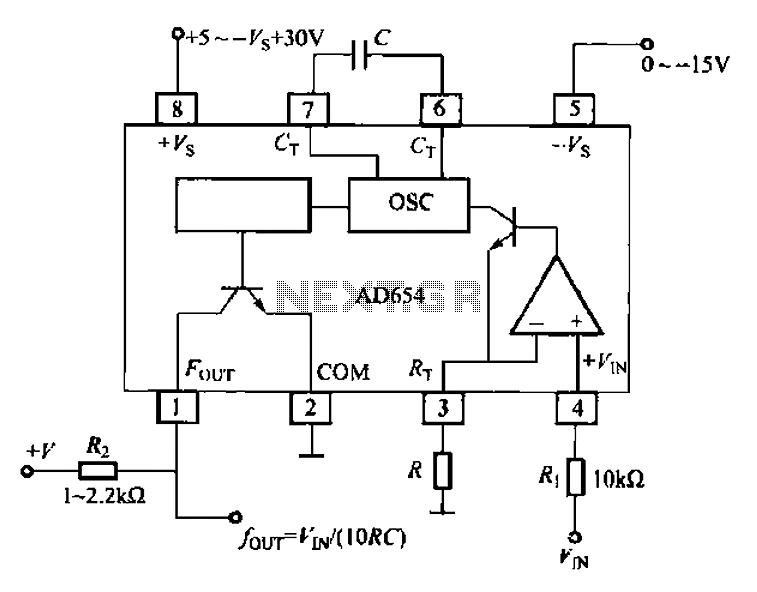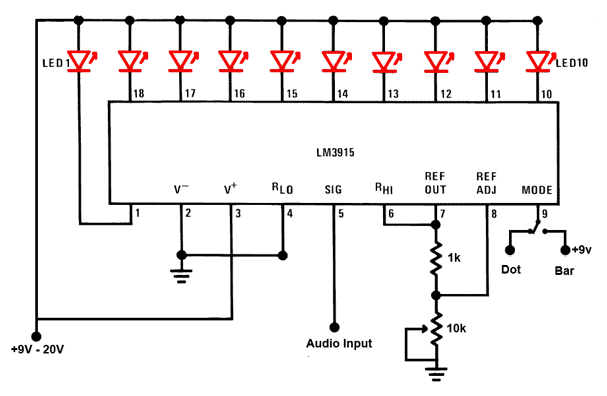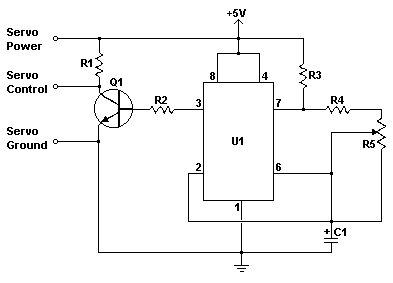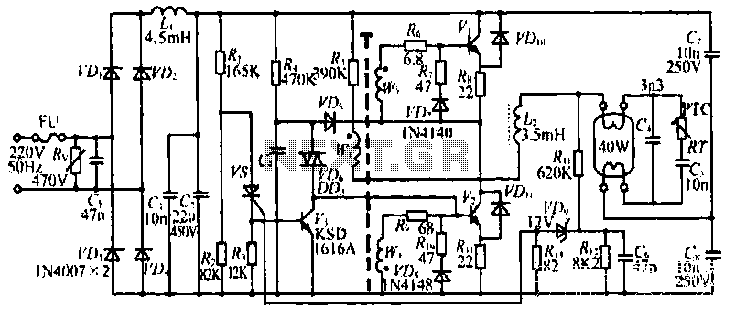
AM circuit ring
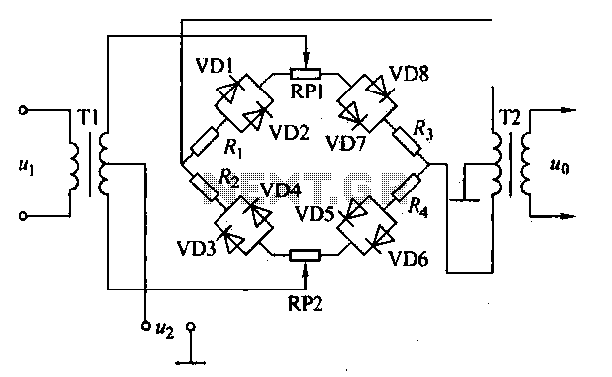
An AM diode ring circuit consists of four diodes arranged in a ring configuration, commonly referred to as a diode ring modulator circuit. This circuit offers significant advantages due to the characteristics of the diodes and the use of discrete components. It often requires the incorporation of resistive element correction circuits. In practical applications, the diode used in the annular AM circuit is typically the VD 2AP9. Reference values for other device parameters include resistances: Ri = R2 = Ra = R4 = 100Ω and RRPI = Rr = PZ = 470Ω. The diode ring circuit facilitates low-frequency modulation signals and high-frequency carrier signals, converting them into an output signal Qi via a high-frequency amplitude modulation circuit. The amplitude modulation circuit features a simple structure, produces minimal harmonic output, and exhibits good balance and symmetry, making it a popular choice for implementation in integrated circuits.
The AM diode ring modulator circuit operates by utilizing four diodes configured in a circular arrangement, which enables effective mixing of the input signals. Each diode in the ring contributes to the modulation process, allowing for the combination of low-frequency audio signals with high-frequency carrier waves. The diodes are essential in shaping the output waveform, ensuring that the amplitude of the carrier signal is altered according to the amplitude of the modulating signal.
The specified diode model, 2AP9, is selected for its favorable characteristics in terms of forward voltage drop and switching speed, making it suitable for high-frequency applications. The resistive components, with values of 100Ω and 470Ω, serve to stabilize the circuit and optimize performance by providing necessary biasing and load conditions. These resistors help to ensure that the diodes operate within their optimal range, minimizing distortion and enhancing the fidelity of the output signal.
The output signal Qi produced by the circuit is a modulated waveform that retains the information of the original audio signal while being transmitted at a higher frequency. The design's simplicity is advantageous, as it reduces the complexity of the circuit and the potential for errors during assembly. Additionally, the low harmonic output contributes to a cleaner signal, which is crucial in communication systems where clarity is paramount.
This diode ring modulator circuit is often integrated into larger systems, such as radio transmission and reception modules, where compactness and efficiency are essential. Its balanced and symmetrical output characteristics make it an ideal candidate for integration into ICs, allowing for mass production and reliability in various electronic applications.AM diode ring circuit consists of four diodes to form a ring road, so called diode ring modulator circuit. AM diode ring circuits greater advantages. Due to the characteristics of the diode and discrete circuits, etc., often have to use resistive element correction circuit, the circuit shown
in actual annular AM diode VD are 2AP9. Other device parameters reference values: resistance; Ri = R2 = Ra = R4 -l OOtl, RRPI -Rr {PZ-470fl. Diode ring circuit low-frequency modulation signal amplitude and high frequency carrier signal by the high-frequency amplitude modulation circuit converting the signal output Qi. The amplitude modulation circuit is simple structure, less harmonic output, good balance and symmetry, often used in the form of an integrated circuit.
The AM diode ring modulator circuit operates by utilizing four diodes configured in a circular arrangement, which enables effective mixing of the input signals. Each diode in the ring contributes to the modulation process, allowing for the combination of low-frequency audio signals with high-frequency carrier waves. The diodes are essential in shaping the output waveform, ensuring that the amplitude of the carrier signal is altered according to the amplitude of the modulating signal.
The specified diode model, 2AP9, is selected for its favorable characteristics in terms of forward voltage drop and switching speed, making it suitable for high-frequency applications. The resistive components, with values of 100Ω and 470Ω, serve to stabilize the circuit and optimize performance by providing necessary biasing and load conditions. These resistors help to ensure that the diodes operate within their optimal range, minimizing distortion and enhancing the fidelity of the output signal.
The output signal Qi produced by the circuit is a modulated waveform that retains the information of the original audio signal while being transmitted at a higher frequency. The design's simplicity is advantageous, as it reduces the complexity of the circuit and the potential for errors during assembly. Additionally, the low harmonic output contributes to a cleaner signal, which is crucial in communication systems where clarity is paramount.
This diode ring modulator circuit is often integrated into larger systems, such as radio transmission and reception modules, where compactness and efficiency are essential. Its balanced and symmetrical output characteristics make it an ideal candidate for integration into ICs, allowing for mass production and reliability in various electronic applications.AM diode ring circuit consists of four diodes to form a ring road, so called diode ring modulator circuit. AM diode ring circuits greater advantages. Due to the characteristics of the diode and discrete circuits, etc., often have to use resistive element correction circuit, the circuit shown
in actual annular AM diode VD are 2AP9. Other device parameters reference values: resistance; Ri = R2 = Ra = R4 -l OOtl, RRPI -Rr {PZ-470fl. Diode ring circuit low-frequency modulation signal amplitude and high frequency carrier signal by the high-frequency amplitude modulation circuit converting the signal output Qi. The amplitude modulation circuit is simple structure, less harmonic output, good balance and symmetry, often used in the form of an integrated circuit.
